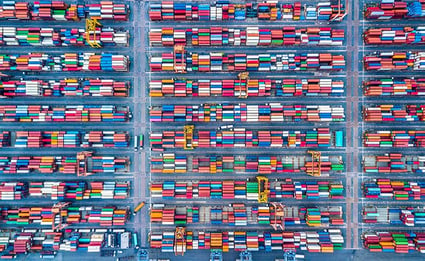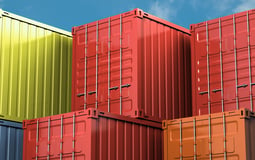The Prescription for Relieving Port Delays
Keith LaBotz - January 27, 2022

There is no cure for port bottlenecks, but you can find relief and it might require you to think about the problem differently.
Why should you care about bottlenecks? Kuehne+Nagel data shows North American ports are responsible for approximately 80% of global disruptions at present.
Seaports often take the blame for the port crisis and this suggests many companies are looking in the wrong places for a solution. A proper examination will show this misplaced sentiment could harm your business.
This post submits a different diagnosis - your supply chain is responsible for the problem and the solution. Read on to see if you agree. After all, getting a second opinion, your own opinion is vital when deciding on the best course of action.
Let’s briefly examine port congestion, why it deserves your attention, and prescribe a few steps for quick relief from the delays.
You Cannot Afford to Ignore This Problem
Delay times at the Southern California port complex, which handles about 40% of containerized cargo imported to the U.S. from Asia, show why this issue deserves your company’s attention:
- According to Marine Exchange, prior to lockdowns, US ports rarely saw more than 17 ships waiting to dock and right now, there are more than a hundred ships waiting at the ports of Los Angeles and Long Beach.
- Wait times for container ships went from zero to an average of 17 days, some waits exceed 30 days.
- Unloaded containers used to take four days to deliver from terminals to warehouses via truck now average nine days.
The Bottleneck Is Not a Port Problem
Ocean ports have managed incoming shipments just fine for decades. They grew organically as ocean cargo steadily expanded in a predictable, linear manner. No one cared whether they were inefficient or at risk as long as schedules were acceptable. There was no problem to fix.
Your Company is Sustaining the Bottleneck
Your company contributes to the demand for container ships if it depends on ocean cargo. The surge of orders that followed the end of lockdowns in China and then Western nations could only be transported with a surge of container ships. The flotilla of container ships creating the bottleneck will remain as long as companies rely on suppliers shipping through those ports.
Lockdowns Created the Bottleneck
The devastation resulting from shutting down multiple economies requires no explanation and the old saying “The road to hell is paved with good intentions” is apropos when examining its impact on supply chains. Lockdowns created a massive supply, demand, and capacity imbalance, resulting in too many orders and ships clogging sea lanes and scant transportation capacity at ports.
What remains is a supply chain wildfire engulfing the road ahead. Transportation networks, including ocean ports, and all of us, will be fighting these fires for years.
Do Not Wait for Ports To Fix Bottlenecks
Your company will pay the price of waiting on port authorities to improve operations. Only 50 percent of the top 50 ports plan to initiate automation projects over the next five years. Too little, too late to resolve this crisis.
Don’t hold your breath hoping ports will move up the schedule for automation projects. There is no incentive for improving facilities now:
- Ports cannot afford to divert resources from the urgency of the current crisis to longer-term improvements.
- There is no ROI for ports to eliminate the bottleneck. Hundreds of ships anchored 40 miles offshore waiting for dock time do not cost port operations, and neither does the supply chain disruption created from the backup. The delays cost parties downstream waiting on port throughput.
- The time required to complete improvements significant enough to eliminate the backlog of ships will likely span years, exceeding the duration of the crisis. The economy will mop up the mess before then.
- Even if a quick fix were to emerge for port congestion, the length of time is irrelevant without a compelling ROI for the ports.
Bottleneck Diagnosis
- Port bottlenecks were caused by supply chain trauma inflicted by lockdowns. The main symptom is volatility, and the condition may worsen if left untreated.
- Ports will not decrease delays, and ocean freight demand will need to drop for an extended period for ports to clear up the traffic jam.
- Governments cannot do much to improve the situation. Some US government attempts to intervene have backfired and were suspended due to their punitive nature, others amount to minor policy and zoning changes with marginal impact.
- Your company should plan on delays to persist indefinitely and take ownership of the problem right now. No one is coming to the rescue.
Bottleneck Prescription
Accept port delays as the new normal and focus on supply chain digitalization. Give top priority to process improvements that improve visibility.
- Implement a cloud solution for shipment visibility. Solutions like flexis ProfiTOUR and Project 44 can quickly enable shipment visibility to the location of incoming orders, delays, and improve the accuracy of ETAs. Your company will be more proactive in providing customer services, experience fewer surprises, and stand out from the competition.
- Improve supply chain planning and optimization. A solution like flexis S&OP planning can smooth out the rough patches from delays with hypothetical planning scenarios for intelligent distribution, logistics, and production planning.
- Onshoring. Removing the seaports from your supply chain will eliminate the problem of port delays, but it will not fully cure it. This is a longer-term solution and it's not feasible for many suppliers. Onshoring will reduce transit time, transportation costs, and greenhouse gases.
You can evaluate this option and come up with a strategy by using solutions like flexis S&OP integrated with flexis ProfiTOUR, to analyze the financial impact of onshoring individual suppliers.
Conclusion
Take the ideas in this post and do something good for your business. Your business will be healthier, you’ll feel a lot better, and your company business will look more attractive to your customers.
Zum Wohl! (To Your Health!)
Click below to download our guide on The Leaner Greener Challenge.
LATEST POSTS
- Understand Circular Economy in The Manufacturing Industry
- How Can Industry 4.0 IT Integration Be Achieved Smoothly?
- The Significance of Order Sequencing in Discrete Manufacturing
- How to improve your Supply Chain Management: The Power of Control Towers
- Optimizing Human Resource Scheduling in Manufacturing: A Technological Approach



